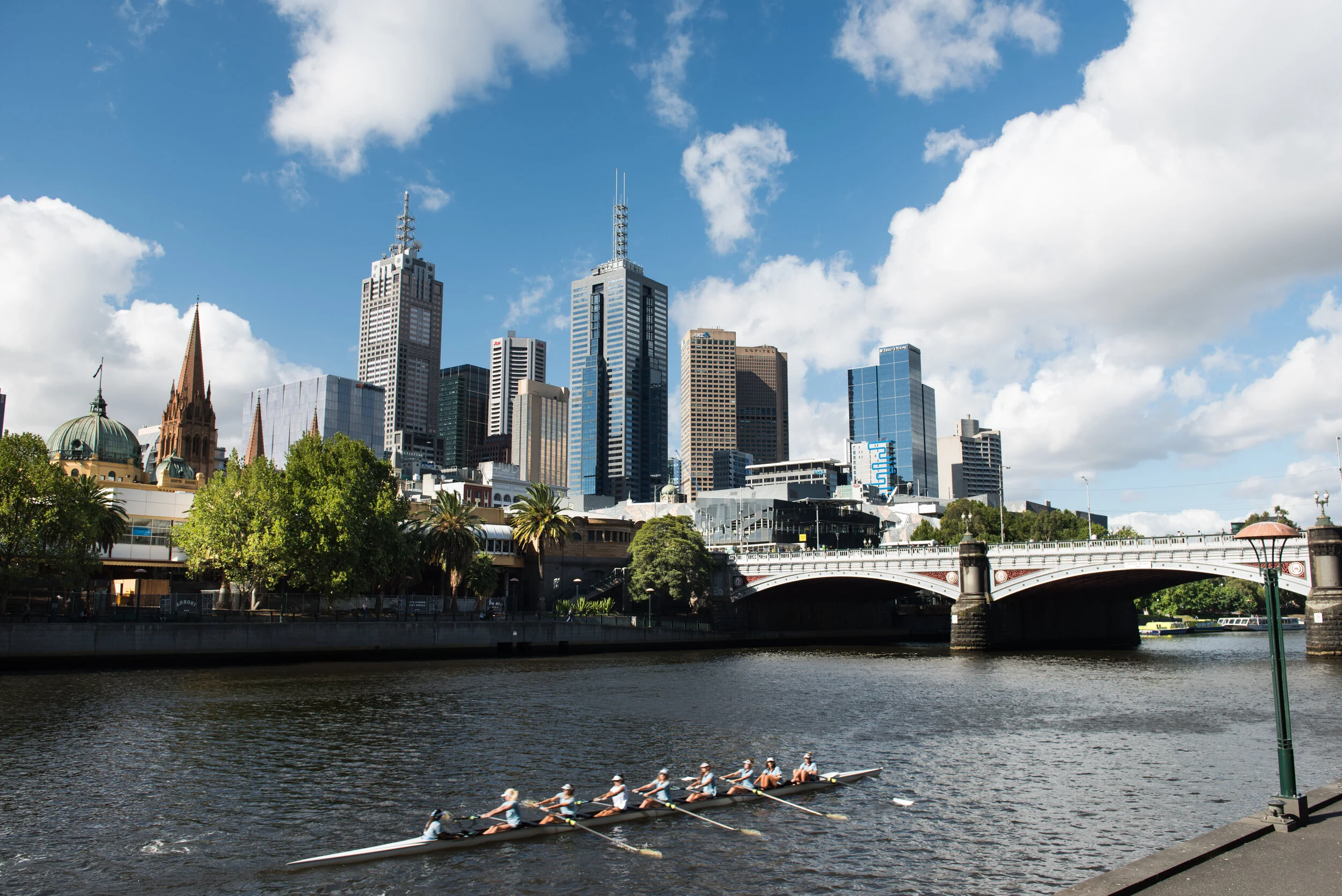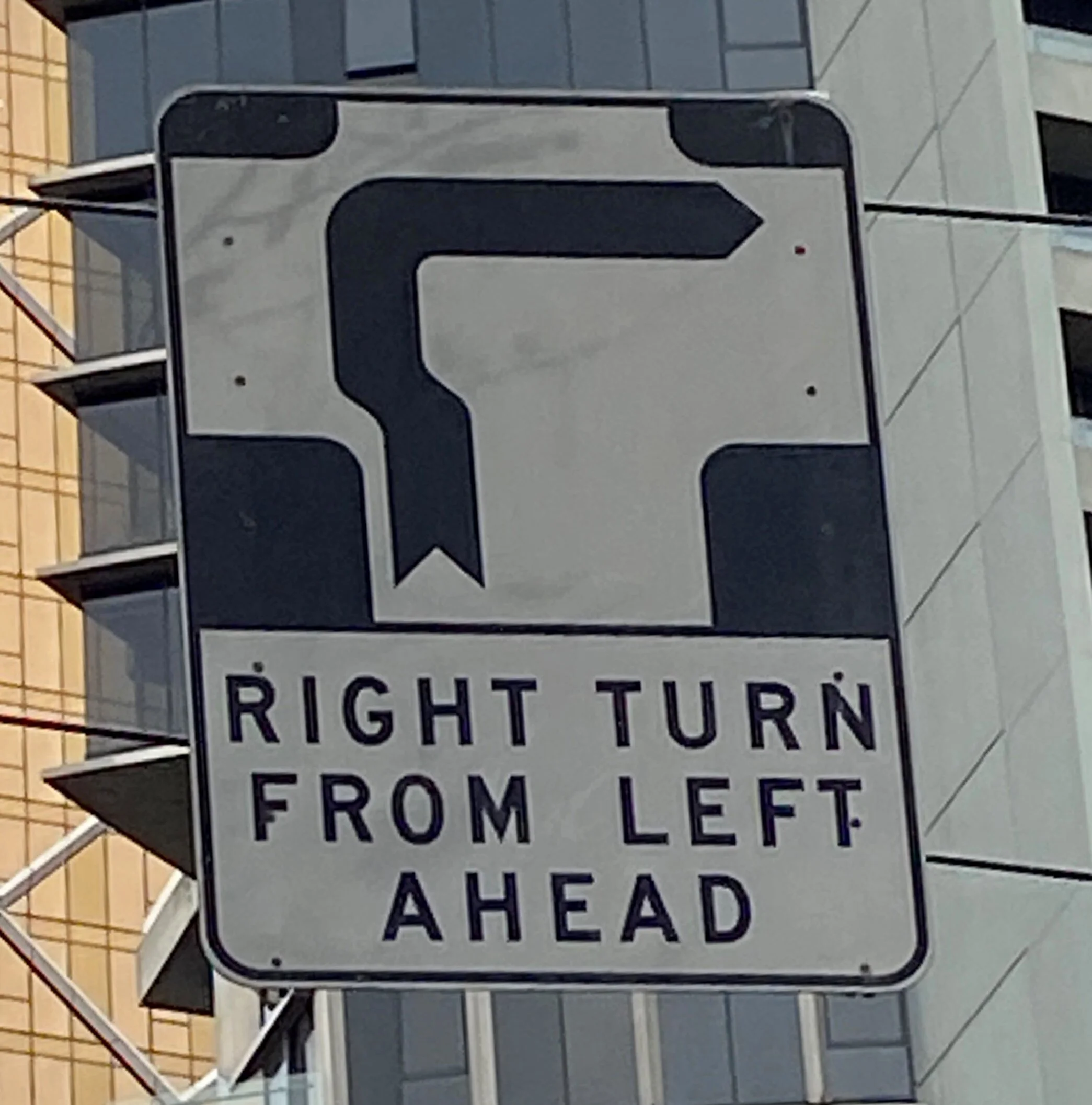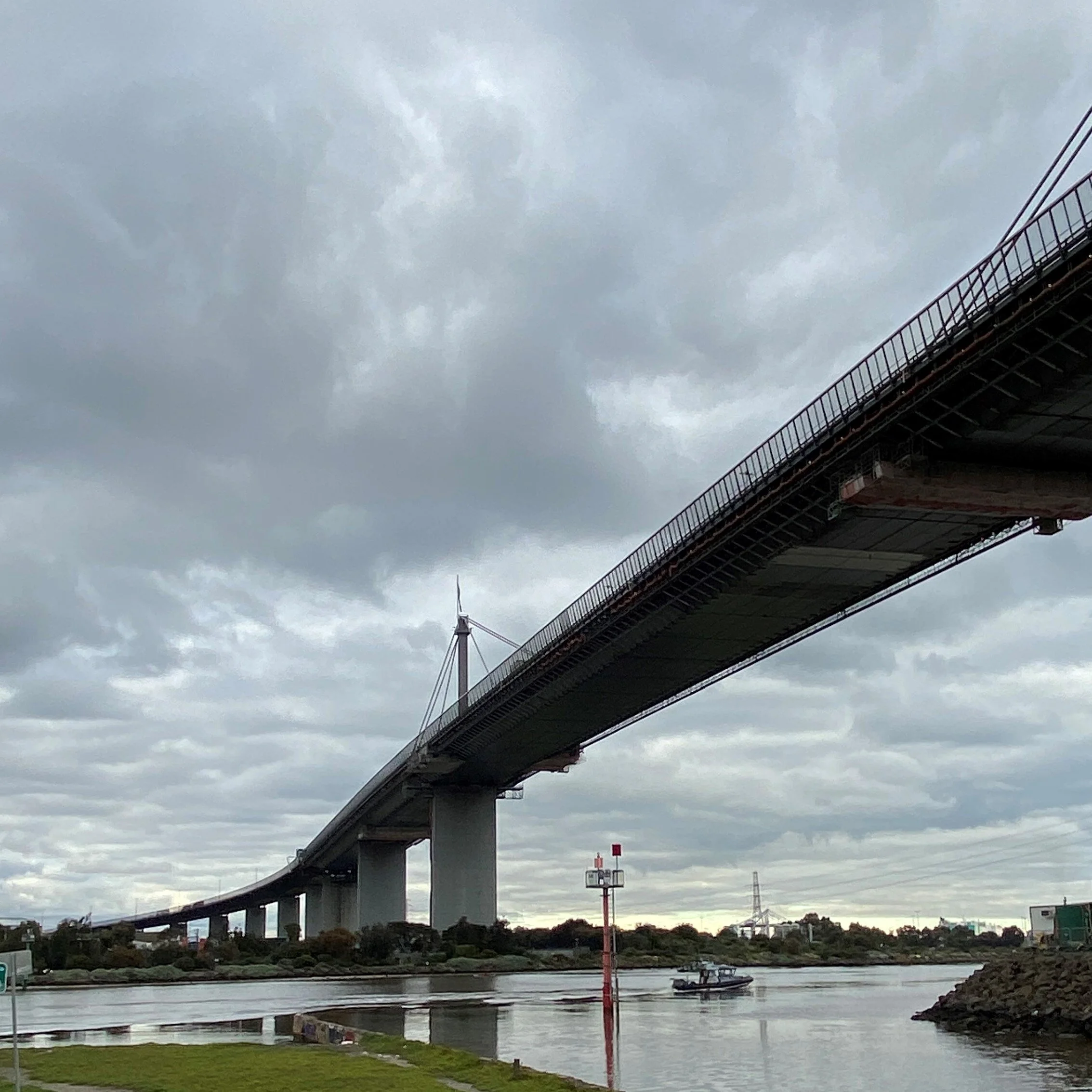There are plenty of sights and sites to love around Melbourne. Today we’re having a slightly tongue in cheek look at the ones we both love and loathe and the ones we just love to loathe.
Hook Turns and Trams
We’ve touched on these two a few times in previous blogs, and we do truly love both… BUT they can be a major pain in the you-know-what at times!
Melbourne’s extensive tram network is conveniently comprehensive and can be a real time-saver. But for other road users, they can be a nightmare. Getting stuck behind a tram in rush-hour makes for a truly tedious drive to work. As it slows down, your hopes raise “Surely, this time I’ll get past it…”, only to watch its doors open with that dreaded Stop sign and suddenly passengers are boarding and disembarking right in front of you. As soon as the doors close the tram is in motion. But not you, because you’re still giving way to that last passenger who jumped off just before the doors closed! Then you catch up to the tram, just in time to repeat the whole painful experience.
We love Hook Turns too because they work so well in the city centre. But we loathe them because, aside from Clarendon Street in South Melbourne, they’re still not the law at suburban intersections. As a result, we’re often held up by right-turning cars when a simple Hook Turn would solve the problem and smooth out rush hour. Hook Turns are also painful when you see road-users performing them incorrectly. Perhaps if Hook Turns were more common throughout suburban Melbourne, then they would become a mandatory checklist in the Learner Permit Logbook and as a result, more drivers would know how to perform the turn correctly?
The Zipper
The Zipper is known by many names in Melbourne, most commonly The Cheesestick and The Carrot Patch. It is an artwork that adorns the CitiLink bypass from Tullamarine Airport to Melbourne which nods its head to two main sources of wealth and income for Victoria, gold (the big yellow pole) and wheat (the smaller red poles). When the tollway originally opened in 2000 the 70 metre ‘bar of gold’ and the 39 metre ‘wheat straws’ created the illusion of a zipper opening as you rounded a bend in road and caught sight of the site.
So why do we hate it? Well, for one thing, many Melburnians have long forgotten what it represents or didn’t know/care to begin with. Another reason is that when sound proof walls were installed on either side of the road they removed the view of the moment when the zipper opens. Melburnians now loathe it so much that less friendly nicknames have been given to it such as eyesore, boom-gate and ribcage (which mostly refers to the sound tunnel adjoining the artwork). Our state Premier at the time when the road and artwork were built was Jeff Kennett, which has led to the even less polite nicknames such as Jeff’s Erection (the yellow pole) and Jeff’s Condom (the sound tunnel).
Show Me Melbourne run a range of tours in Melbourne including Sports, History, Local Culture and Wine, Gin & Cocktail tours. They also run bespoke tours on request on any facet of Melbourne. Visit www.showmemelbourne.com.au
Bourke Street Mall
Named for New South Wales Governor Richard Bourke, who named the new village ‘Melbourne’ in 1836, Bourke Street lies in the centre of Melbourne CBD. The block between Swanston and Elizabeth is known as Bourke Street Mall and was pedestrianised in 1978 when it was cut off to all traffic except trams, pedestrians and emergency vehicles.
We love the Mall for the flagship Myer store and her annual Christmas windows, for David Jones and for the numerous shopping arcades sprouting out of it. The tourists love it too, which forms the main reason we loathe this famous Melbourne site – in a non-lockdown Melbourne, it can be a slow and tedious journey through the mall. Even the trams and tram stops through here are constantly packed with people.
Cooks Cottage, Fitzroy Gardens
Cooks Cottage was purchased as a gift for the people of Melbourne to celebrate the city’s centenary in 1934. The building was purchased for £800 by Sir Wilfrid Russell Grimwade, a chemist born in Caulfield, Melbourne. Grimwade arranged for the cottage to be deconstructed with every brick and slate roof tile to be numbered and packed in to cases and barrels and shipped to Melbourne. He even made sure that cuttings were taken from all the plants growing in the garden, so that the home could be resurrected as close to its original state and situation as possible.
Grimwade was of the understanding that the cottage was the childhood home of Captain James Cook. Records have since been unearthed which prove this to be otherwise. The cottage was originally constructed in 1755 in the village of Great Ayton, North Yorkshire, England by James and Grace Cook, the parents of the sailor who discovered the eastern coastline of Australia as well as New Zealand and the many islands in the south of the Pacific Ocean. 1755 is the year that James Jnr joined the Navy, while it is highly likely he stayed overnight in the cottage while visiting his parents on shore leave, it is certain that he did not grow up in it. It is for this reason alone that we love to loathe the sight of this site.
West Gate Bridge
The West Gate Bridge is a steel box girder, cable-stayed bridge which was opened in November 1978. It has 10 lanes which transport over 200,000 vehicles per day, making it one of the busiest roads in the country. The West Gate Bridge is the main thoroughfare to the state’s second largest city, Geelong, and for nearly all residents living in Melbourne’s western suburbs. The current demands on the bridge greatly outweigh the expectations of its construction.
Anyone who has ever been stuck in traffic atop this bridge will tell you they loathe it! Like many tall structures, it was built with a bit of ‘give’ so that a good strong wind doesn’t blow it down. When travelling the bridge at the regulation 80 kilometres per hour, you don’t notice it. But when you spend more than a few seconds at a standstill on the bridge, you can feel it sway. At 60 metres above the Yarra River, that can be very disconcerting, even when you’re NOT afraid of heights!
The other reason the bridge is a loathed site in Melbourne is because of the daily reminder it provides of Australia’s most tragic industrial accident. Two years into its construction, on 15 October 1970, a 112-metre section fell to the ground and water below. 35 construction workers were killed and a further 18 were injured in the collapse.
Shot Tower at Melbourne Central
The 9-storey, 50 metre tall, heritage listed Coop’s Shot Tower has featured in Melbourne’s skyline since 1889. From this factory, the Coop family manufactured lead shot (metal pellets used as ammunition in cannons and firearms) until 1961. In 1896 they also purchased an older and bigger (69m) shot factory in Clifton Hill, which is also protected by heritage listing.
In the 1990’s the CBD site was redeveloped into the Melbourne Central Shopping Centre and Coop’s Shot Tower became the focal point of the development. Both towers are beloved landmarks in Melbourne but the Shot Tower in Melbourne Central is also loathed by us.
Why? For the usual reasons, the area beneath it becomes gridlocked with tourists and shoppers and friends meeting (under the shot tower is another popular meeting point, much like ‘under the clocks at Flinders Street’). When you’re rushing to catch a train from Melbourne Central Station below, there is not much more stressful and tedious than having to negotiate hordes of merry-makers. It’s the same reason we love to loathe the steps at Flinders Street Station and the roads around the MCG on match days!







